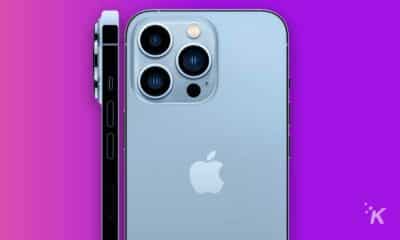
Just a heads up, if you buy something through our links, we may get a small share of the sale. It’s one of the ways we keep the lights on here. Click here for more.
There was a time when people primarily thought of their home WiFi service as something that helped them connect to the Internet. Now, it still serves that function, but also connects to various other devices — from smart speakers to thermostats — and increases their capabilities.
The exact steps you go through to connect a device to WiFi vary depending on the type of gadget you have. However, in most cases, the things to do are similar across devices.
Make sure you have the WiFi turned on
Make sure your Wi-Fi is on and has adequate signal strength. Keep the Wi-Fi enabled for the duration of this setup process. Previously, you might have connected a physical cable to a port, but the widespread availability of wireless technology is one of the factors helping us move toward a portless, wire-free future.
Bluetooth connectivity is another advancement that lets people use tech without connecting things to ports first.
Activate your device
Next, turn your device on, as well. Look for a button that reads Connect or has a WiFi symbol. You may need to push it to trigger the device to search for active WiFi networks.
If your gadget has a screen, it will likely show you a list of available networks and allow you to choose the one that matches your home network. If that network is password-protected, you may see a padlock symbol next to the name. After selecting it, you’ll need to enter the password.
Download the accompanying app if necessary
Many devices that connect to WiFi have apps that permit controlling the gadgets from your smartphone. It’s a good idea to download the app early in the setup process. You may even need to download it before attempting to connect a device to the network.
That possibility is especially likely if your gadget does not have a screen to show available networks. Then, you’d look at the networks and connect to one by swiping your smartphone or tablet screen. An app may also simplify connecting other compatible devices to the initial gadget once you get it set up.
Turn tour attention to devices without built-in connectivity
Did you know it’s possible to make non-connected gadgets pair with your WiFi connection, thereby converting them to smart devices? First, you need to invest in some equipment. The cheapest option is to buy smart plugs. Then, the plugs connect to the WiFi and control whatever you plug into them.
As an example, you might have a lamp or portable air conditioner without smart capabilities. Once you set up a reliable smart plug — using the suggested steps above — and plug something into it, you could turn that gadget on or off without using a switch in the traditional way.
Read the device’s user manual and explore other instructional possibilities
As discussed earlier, although the steps for setting up most WiFi-enabled devices are similar, differences may exist depending on the type of product you buy. So, it’s a good idea to carefully read the set-up manual that comes with the item.
Take note of the customer support telephone number or the address of an online forum where people help each other with troubleshooting. Those resources and others could prove invaluable if you run into issues.
Besides studying the user manual, consider you might also find how-to setup tutorials on YouTube. Those video clips give useful assistance to people who are mainly visual learners.
Think about the long-term benefits of connecting the device
A wide variety of devices exist to make our lives easier in various ways. Many of them aim to replace the so-called “dumb” devices that don’t have built-in WiFi connectivity, while some can be converted into smart devices with the help of some additional technology. Nevertheless, connecting both kinds of devices will improve the value of a home by making life more convenient and homes more appealing.
Take doors, for example. Smart locks are available for consumers to connect their doors to their smartphones for more protection, while non-smart garage doors can be improved using smart devices that enable WiFi connection. A survey even found 41 percent of homeowners are happier for replacing their old garage door because it creates a more valuable residence, making these new home improvements worthy investments for the future.
In general, if you’re having trouble convincing yourself to connect a new device to your WiFi — maybe because of feeling overwhelmed the process will be too complex — stop considering all the reasons to delay the device setup process. Instead, shift your thoughts to how much more you’ll probably enjoy life after getting everything connected.
Start enjoying a more connected environment
After reading the advice above, you should feel well-equipped to give your best effort when working with connected devices and linking them up with your WiFi. Remember, you’ll get better with practice, so the best approach is to dive in and learn as you go.
Any other tips you’d like to add? Let us know in the comments below.
For more how-to guides, check out:
- How to make your Google Home bilingual
- Here’s how to unblock someone on Instagram
- How to convert files from MOV to MP4





























